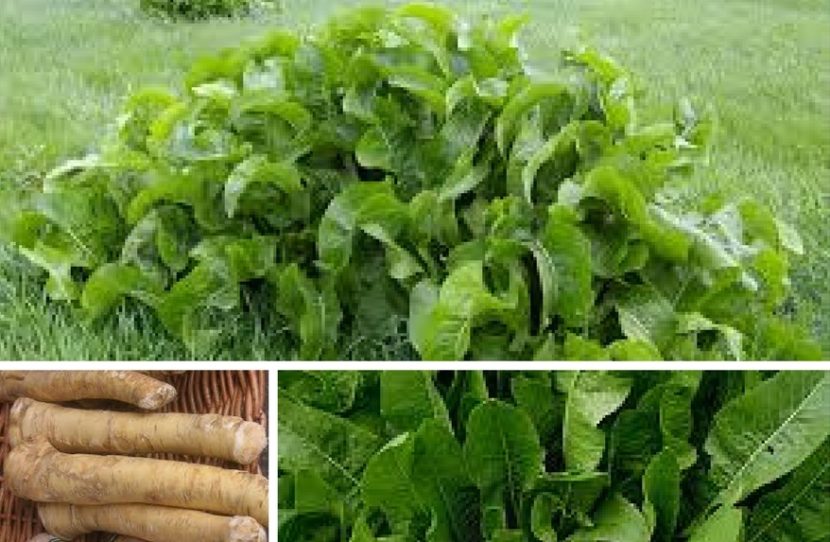Armoracia rusticana
Cultivation
There is not a lot of work to do with horseradish, unless you want to get long and even tubers. Grow grafts from the side tubers by planting them in spring to a 30 cm (12 in) pit, filled with 20 cm (8 in) compost. They should be planted into soil obliquely to prevent turning.
Distance between plants
At least 40 cm (15 in) between rows and at least 80 cm (30 in) between plants in a row.
Location
Sunny or half-shade.
Amount
One plant per person is sufficient.
Time of planting
Plant in early spring, as early as March.
Fertilization
Fertilize the soil in fall with barn manure and put compost into a dip where you will plant horseradish in spring. Water occasionally with nettle-comfrey brew.
Watering
Soak once a week during hot summers to reduce the strong taste.
Horseradish’s good neighbors
Potato, plums.
Horseradish’s bad neighbors
Brassica vegetables.
Diseases and pests
Similar to brassica – flea beetles, caterpillars. It helps planting among potatoes, watering with algae brew and using tomato tea or purchased solutions for bigger problems.
Horseradish’s storage
Pull it out with spading fork and make sure you remove all tubers; otherwise they will grow the following years as weeds among other vegetables. Store in moist sand in the basement.
Food
Use the meaty tuber, fresh or cooked. It contains a lot of sulfur which disinfects the whole digestion system. Young leaves are edible too, as well as the sprouts which are full of vitamin C and beta-carotene.
Important
Cultivate it separately to avoid problems with weeds.
Miscellaneous
It is a perennial, originating in Southeast Europe and West Asia, brassica relative.

